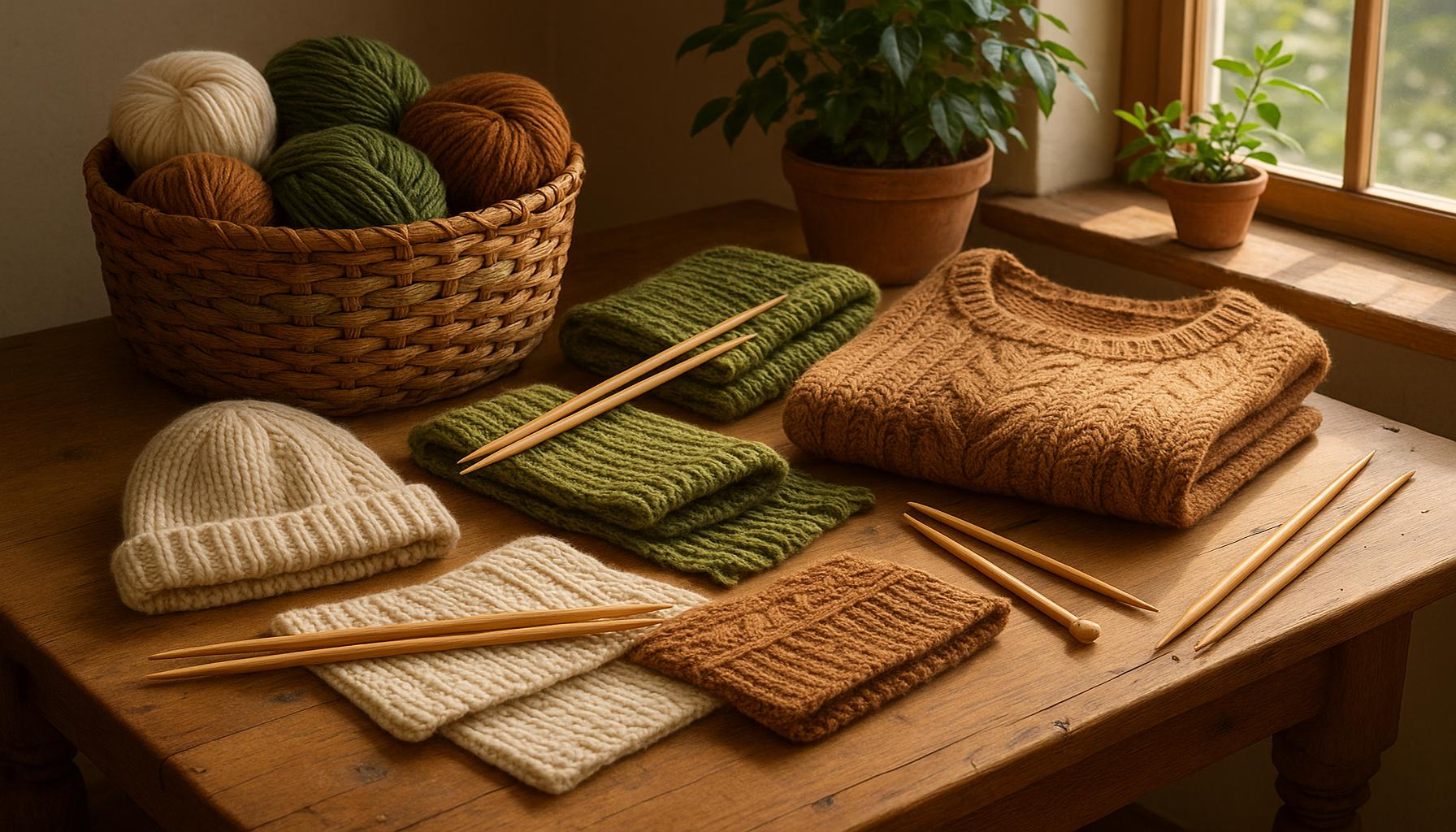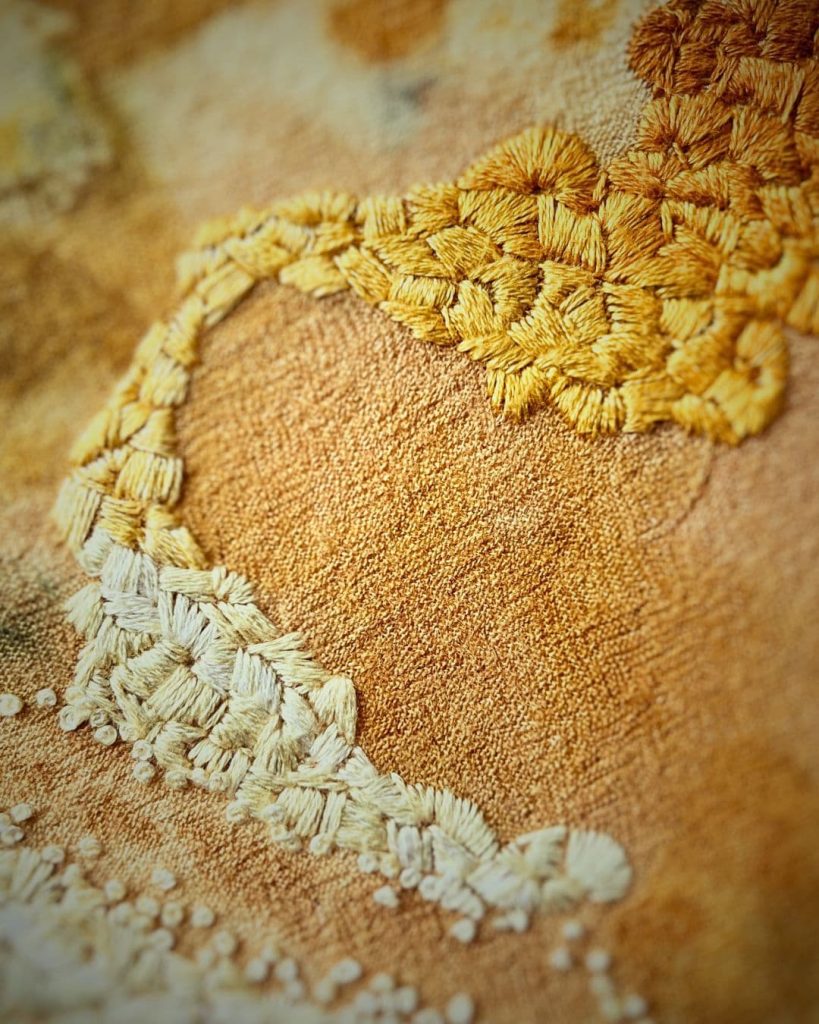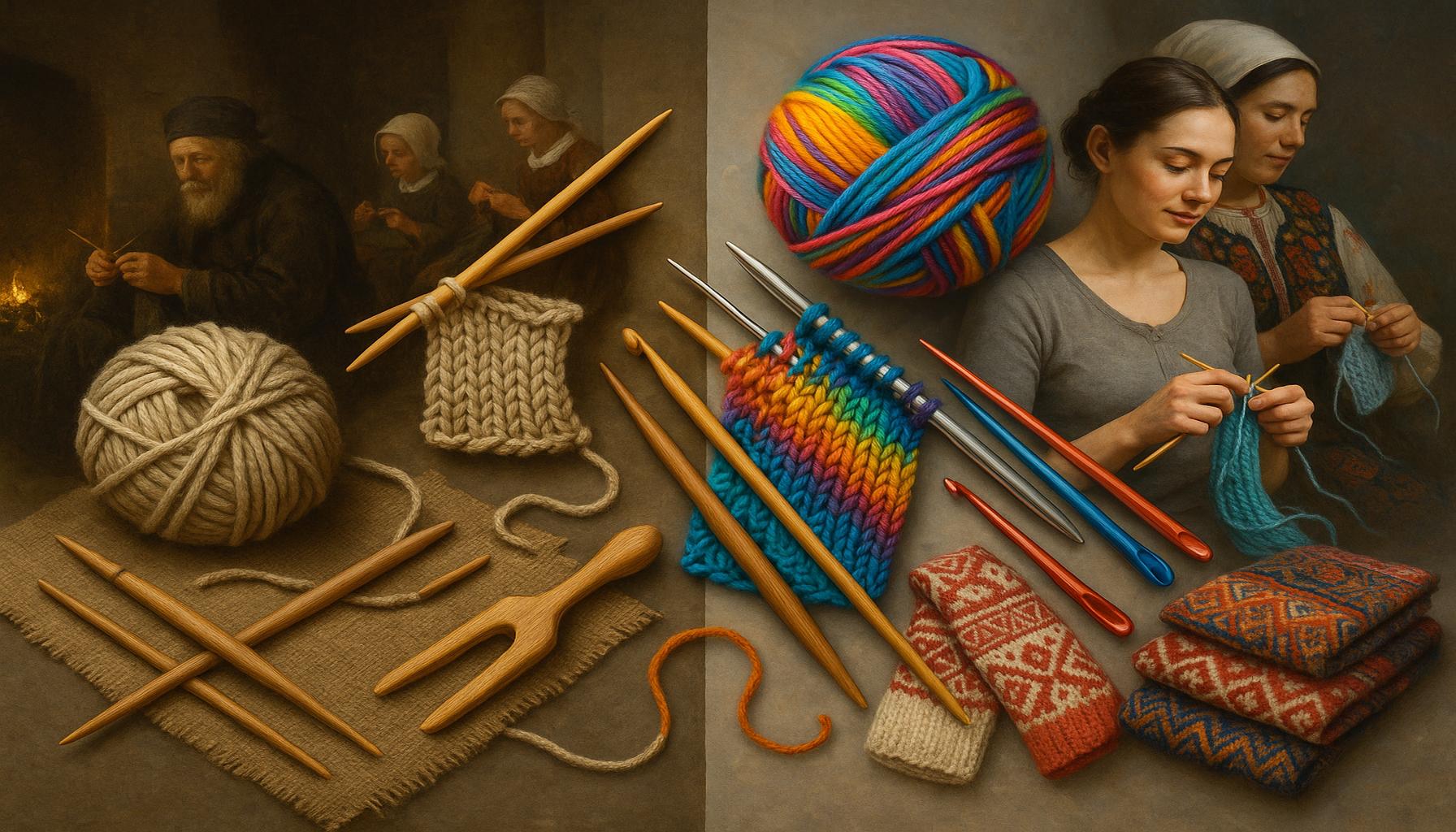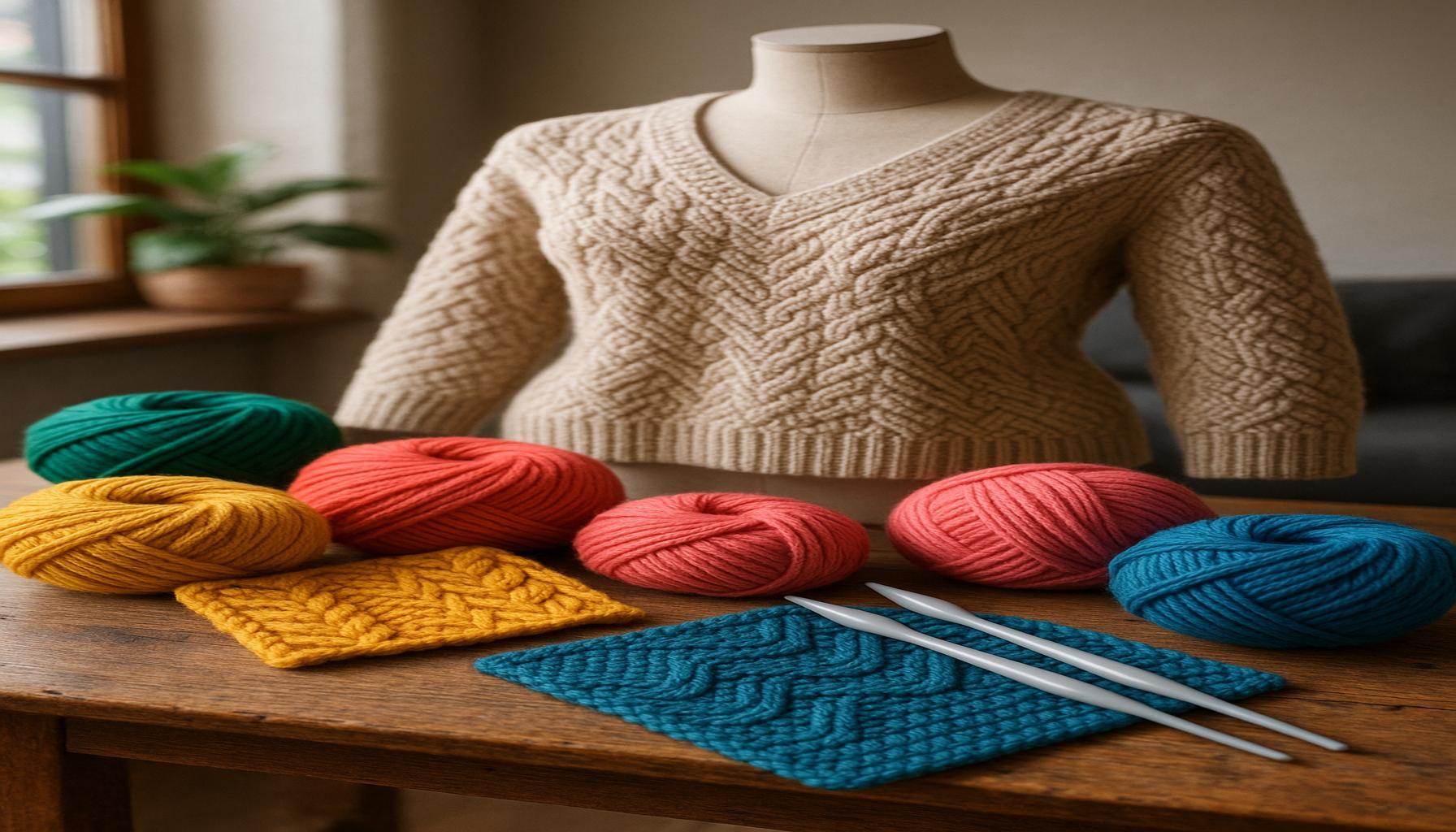Sustainable Knitting: How to Create Ecological Pieces with Organic Materials

The Rising Trend of Eco-Conscious Knitting
As the world increasingly turns its focus towards environmental consciousness, knitting enthusiasts are finding innovative ways to align their passion with sustainability. Crafting ecological pieces using organic materials not only reduces your carbon footprint but also promotes a healthier planet. In recent years, knitting has evolved from a traditional craft into a platform for environmental advocacy, allowing crafters to make a tangible positive impact through their creative endeavors.
Natural Fibers: The Foundation of Sustainable Knitting
Choosing natural fibers is pivotal in the sustainable knitting movement. Options such as organic cotton, which is grown without harmful pesticides or fertilizers, not only reduce chemical runoff into the environment but also ensure that farmers are not exposed to harmful substances. Bamboo yarn, prized for its softness and antibacterial properties, is a great choice as it grows rapidly and requires minimal resources to cultivate. Similarly, wool from sheep, when sourced ethically, is biodegradable and renewable, making it a cornerstone for sustainable fabrics.
Eco-friendly Dyes: Color Your World Responsibly
An essential facet of sustainable knitting involves selecting eco-friendly dyes. Many conventional dyes contain toxic chemicals that can harm the environment during production and disposal. By opting for plant-based or low-impact dyes, knitters can ensure a cleaner and more responsible dyeing process. This not only enhances the safety of the finished product but also contributes to a reduction in the overall ecological footprint of the garment.
Implementing Zero-Waste Techniques
Waste reduction is another critical principle in sustainable knitting. By adopting techniques such as zero-waste knitting, crafters can minimize material loss significantly. This approach entails designing projects in a way that all fabric is utilized, often by creating garments that can be adjusted or reconfigured based on the available material. Patterns that embrace geometry can lead to beautiful, functional pieces while ensuring that no scraps go to waste.
Support Local Craftsmanship
Knitting sustainably also encourages the use of local, responsibly sourced materials. This connection to community not only supports local economies but also lessens the environmental impact caused by shipping products across long distances. Many regions in the United States boast independent farms and fiber mills, where knitters can directly source their materials, fostering a direct relationship with the artisans and enhancing the uniqueness of their projects.

In this guide, we will delve deeper into the principles of sustainable knitting, exploring practical tips and inspiring projects to help you transform your craft. Consider engaging with local knitting groups or taking workshops that focus on sustainable practices. Discover how you can create beautiful, eco-friendly garments that resonate with your values and style, transforming not just your wardrobe but also your contribution to a greener planet.
DISCOVER MORE: Click here to learn about innovative sustainable sculptures
Embracing Sustainability in Your Knitting Journey
The shift towards sustainable knitting represents more than just a change in materials; it highlights a broader cultural movement focused on mindfulness, ethical craftsmanship, and ecological responsibility. With so many options available today, knitters have an unprecedented opportunity to make informed choices about the sources and qualities of their materials. Understanding the implications of using organic and sustainable practices in crafting not only benefits the environment but also enriches the creative process.
The Importance of Sourcing Organic Materials
When embarking on a sustainable knitting journey, the first critical step is the careful selection of organic materials. Unlike conventional materials, organic fibers are cultivated without synthetic pesticides and fertilizers, which can have devastating effects on ecosystems and human health. By choosing organic options, knitters contribute directly to safer agricultural practices. Here are a few popular organic materials to consider:
- Organic Cotton: Grown in soil free from chemicals, organic cotton is not only soft and breathable but also a sustainable option for a variety of projects.
- Hemp: A highly durable fiber requiring minimal water and pesticides to grow, hemp not only produces beautiful fabric but also contributes to soil health by preventing erosion.
- Alpaca Yarn: Known for its incredible softness and warmth, alpaca fibers are biodegradable and remain sustainable when sourced from ethical farms that prioritize animal welfare.
- Recycled Fibers: Using recycled yarns made from sourced textiles diverts waste from landfills and reduces demand for new materials, making it a fantastic choice for eco-conscious knitters.
Understanding Environmental Impact
Beyond sourcing, it is also vital to examine the entire lifecycle of the materials used in your knitting. The production, transportation, and eventual disposal of yarn can all contribute to environmental harm, including pollution and resource depletion. For instance, conventional cotton production consumes vast amounts of water, while the dyeing process often involves hazardous chemicals. By choosing sustainable practices, we can significantly lessen our ecological footprint. Some helpful approaches include:
- Prioritizing Local Suppliers: Opting for local farms and suppliers not only reduces transportation emissions but also strengthens community ties.
- Minimizing Plastic: Seek out yarns that come in sustainable packaging or are plastic-free to cut down on waste.
- Participating in Yarn Swaps: Engaging in community events and exchanges can provide access to materials that others may no longer need, fostering a culture of reuse.
Crafting with Intention
As you explore sustainable knitting, remember that crafting with intention leads to more than just beautiful pieces; it cultivates a greater connection to your work and the environment. Each stitch contributes to a larger narrative of sustainability and responsibility, allowing you to express your values through every knitted garment. Engage in discussions with fellow crafters, share knowledge, and become part of a growing movement dedicated to protecting our planet through creative expression.
| Advantages of Sustainable Knitting | Key Characteristics |
|---|---|
| Eco-Friendly Materials | Utilizes organic fibers such as cotton, wool, and bamboo, which reduce environmental impact. |
| Reduced Carbon Footprint | Organic materials promote a lower carbon footprint, supporting a sustainable ecosystem. |
| Healthier Alternatives | Free from harmful chemicals and pesticides, they are safer for both the skin and the earth. |
| Durability of Products | Designed for longevity, minimizing waste and promoting responsible consumption. |
The journey into sustainable knitting not only elevates your craft but also aligns it with environmental stewardship. By choosing eco-friendly fibers, you contribute to a healthier planet while creating unique and beautiful pieces. While knitting enthusiasts appreciate the reduced carbon footprint associated with organic materials, they also discover that these fibers are kinder to our skin. The health benefits extend beyond the individual, supporting a more sustainable and responsible textile industry. Moreover, the durability of the products crafted from organic materials ensures each piece is a long-lasting investment. This approach to knitting encourages a mindful attitude toward consumption, inspiring both creators and consumers to embrace eco-conscious practices. Explore further the world of sustainable materials, patterns, and techniques to enhance your crafting experience.
DISCOVER MORE: Click here to dive deeper
Techniques for Sustainable Knitting
Once you have sourced your organic materials, the next step is to adopt sustainable knitting techniques that align with your values. These methods not only help minimize waste but also enhance the longevity and usability of your knitted pieces. Embracing innovative approaches ensures that your creative endeavors are both environmentally friendly and rewarding.
Utilizing Efficient Patterns
Choosing the right patterns plays a crucial role in sustainable knitting. Opting for designs that utilize less yarn or have efficient construction can significantly minimize yarn waste. Patterns that allow for modular designs, such as squares or rectangles, let you maximize every inch of yarn while creating visually appealing pieces. Additionally, using leftover yarn from previous projects to create unique patches, colorwork, or accessories promotes a zero-waste mentality. The rise of upcycling trends in the knitting community fosters creativity and innovation, proving that sustainability can coexist with style.
Understanding Knitting Techniques that Promote Durability
The effectiveness of yarn in creating long-lasting garments relies heavily on the knitting technique employed. Techniques like cabling and double-knitting result in thicker and sturdier fabrics—ideal for creating pieces that withstand wear and tear. Moreover, incorporating reinforcement in stress points, such as cuffs or seams, guarantees that your efforts yield durable and functional items. Engaging with specialty techniques found in the traditional crafting communities, such as brioche or fair isle, can enhance your skill set while promoting the rich heritage of sustainable craftsmanship.
Mindful Knitting Practices
Practicing mindful knitting not only enriches your experience but can also lead to more sustainable outcomes. This can involve dedicating time to focus on each stitch, thereby improving your techniques and ultimately creating pieces that are well-crafted and meaningful. Meditative practices integrated into knitting routines can raise awareness of material consumption, skillfully intertwining meditative moments with ecological mindfulness. For those dealing with busy minds, learning to incorporate slow crafting into their routines can offer mental benefits while fostering a deeper appreciation for the resources involved.
Joining Sustainable Knitting Communities
Connecting with like-minded individuals can provide invaluable resources, support, and inspiration. Numerous clubs, online forums, and local workshops exist across the United States that focus on sustainable knitting practices. Engaging in these communities allows you to share your experiences, ask questions, and gain insights into new techniques or materials. These interactions can lead to collaborative projects and greater awareness surrounding sustainability in the knitting world.
Moreover, sustainable knitting groups often organize events or challenges that encourage members to experiment with ecological techniques and raise awareness about the importance of sustainability in fashion. These initiatives can help spread the message further and inspire others beyond just the knitting community. By participating in workshops that emphasize eco-friendly practices or even volunteering on knitting initiatives within your community, you foster a broader sense of cohesiveness and responsibility.
Through the combination of effective sourcing, informed techniques, and community engagement, you can solidify your commitment to sustainable knitting. Each element works synergistically to reduce environmental impact while celebrating the art of knitting. As you continue to explore and refine your knitting journey, consider the wider implications of your choices and the positive impact they can have on the environment and your personal craftsmanship.
DISCOVER MORE: Click here to dive deeper into street photography
Conclusion: Embracing Sustainable Knitting for a Greener Future
As we delve deeper into the world of sustainable knitting, it becomes increasingly evident that our crafting choices carry significant weight. By consciously selecting organic materials and employing sustainable knitting techniques, we are not only enhancing the quality and durability of our creations but also contributing to a healthier planet. The fusion of creativity and environmental stewardship empowers knitters to make thoughtful decisions that resonate beyond the craft itself.
Exploring efficient patterns and employing mindful practices not only reduce yarn waste but also nurture a more profound connection to our work. Additionally, engaging within sustainable knitting communities fosters a rich exchange of ideas, allowing us to collectively champion ecological fashion. The collaborative spirit of these groups can catalyze meaningful change, encouraging more individuals to adopt green practices and prioritize sustainable craftsmanship.
Incorporating sustainable knitting into our lives illuminates the impact of our personal choices. Each stitch we create can be a step toward a more sustainable future in fashion, urging a larger conversation about the importance of taking care of our resources. As we continue to share our passion for knitting, let us remember that with every sustainable piece we finish, we are part of a collective movement towards a more conscious and eco-friendly world. So, pick up those needles, explore the richness of organic yarns, and let your creativity flow—one ecological masterpiece at a time.



